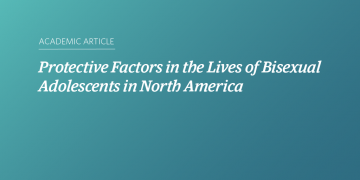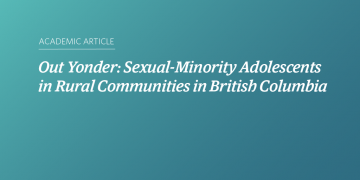Sexual-orientation disparities in substance use in emerging adults: A function of stress and attachment paradigms
Abstract More lesbian, gay, and bisexual (LGB) youths than heterosexuals report substance use. We examined a theoretical model to understand these disparities in lifetime and past-year substance use by means of stress and attachment paradigms, using the longitudinal Growing Up Today Study (GUTS) and Nurses’ Health Study II (NHSII). GUTS participants are the children of […]
Substance Use and Sexual Orientation among East and Southeast Asian Adolescents in Canada
Abstract The purpose of this study was to examine the relationship between substance use and sexual orientation among Asian adolescents in Canada. We analyzed an East- and Southeast-Asian subsample of a province-wide, school-based survey (weighted N = 51,349). Compared to heterosexual adolescents of the same gender, gay, lesbian, bisexual, and mostly heterosexual adolescents were more likely to use […]
Enacted Stigma, Problem Substance Use, and Protective Factors among Asian Sexual Minority Youth in British Columbia
Abstract This study examined enacted stigma and problem substance use among Asian sexual minority youth and the buffering role of protective factors. Logistic regression analyses of a weighted sample of 5,423 Asian youth who completed the 2003 BC Adolescent Health Survey indicated that sexual minority youth were more likely to be victimized compared to heterosexual […]
Research on Adolescent Sexual Orientation: Development, Health Disparities, Stigma, and Resilience
Abstract The decade between 1998 and 2008 saw rapid increases in research on adolescent sexual orientation development and related health issues, both in the quantity and in the quality of studies. While much of the research originated in North America, studies from other countries also contributed to emerging understanding of developmental trajectories and social influences […]
Best Practices for Asking Questions about Sexual Orientation on Surveys
In 2003 the Ford Foundation began funding a multi-year project that sought to increase the quantity and quality of data on gay, lesbian, and bisexual people, and, by extension, on heterosexual people. Over a five-year period, many researchers participated in the expert panel funded by the grant, thus contributing to the knowledge embodied in this […]
Reducing problem substance use in Asian sexual minority and heterosexual youth [abstract]
Purpose: Youth who identify as lesbian, gay, or bisexual (LGB) are at greater risk of being stigmatized compared to heterosexual peers, and are also more likely to report substance use. This study examined the relationship between stigma and problem substance use for Asian LGB and heterosexual youth, generating probability profiles to investigate the role that […]
Protective Factors in the Lives of Bisexual Adolescents in North America
Abstract Objectives. We compared protective factors among bisexual adolescents with those of heterosexual, mostly heterosexual, and gay or lesbian adolescents. Methods. We analyzed 6 school-based surveys in Minnesota and British Columbia. Sexual orientation was measured by gender of sexual partners, attraction, or self-labeling. Protective factors included family connectedness, school connectedness, and religious involvement. General linear models, conducted […]
Out Yonder: Sexual-Minority Adolescents in Rural Communities in British Columbia
Abstract Objectives: We compared sexual-minority adolescents living in rural communities with their peers in urban areas in British Columbia, exploring differences in emotional health, victimization experiences, sexual behaviors, and substance use. Methods: We analyzed a population-based sample of self-identified lesbian, gay, or bisexual respondents from the British Columbia Adolescent Health Survey of 2003 (weighted n = 6905). […]
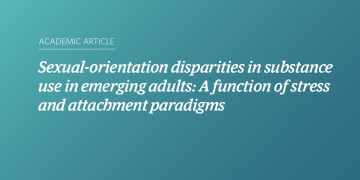
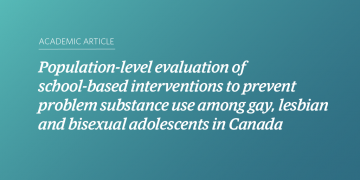
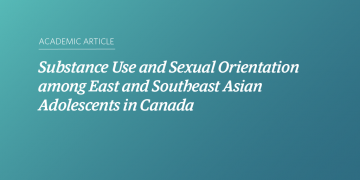
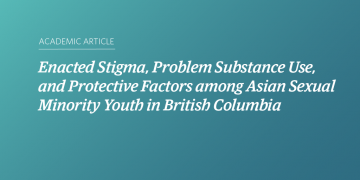
![Teal and blue gradient background with white text that says “Reducing homophobia in high school: The effects of “The Laramie Project” play and an integrated curriculum [abstract]”](https://www.saravyc.ubc.ca/files/2011/08/Reducing-homophobia-in-high-school-The-effects-of-“The-Laramie-Project”-play-and-an-integrated-curriculum-abstract_Twitter-360x180.png)
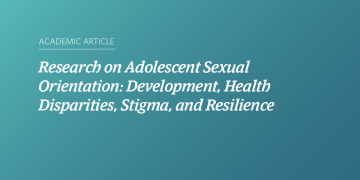
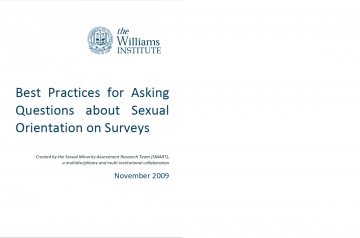
![Teal and blue gradient background with white text that says “Reducing problem substance use in Asian sexual minority and heterosexual youth [abstract]”](https://www.saravyc.ubc.ca/files/2009/08/Reducing-problem-substance-use-in-Asian-sexual-minority-and-heterosexual-youth-abstract_Twitter-360x180.png)
